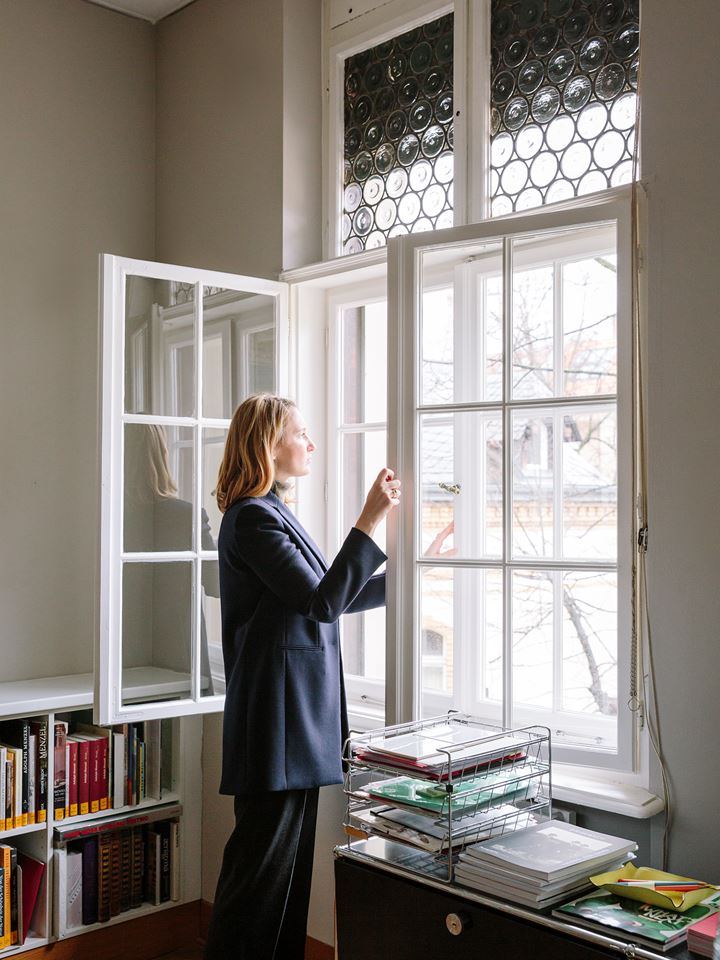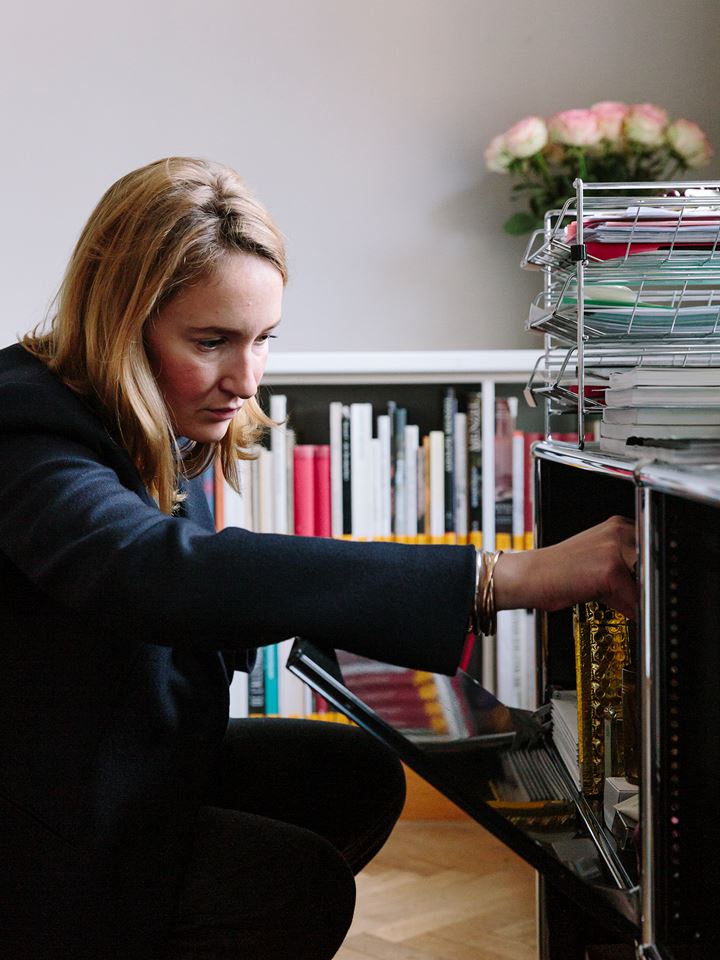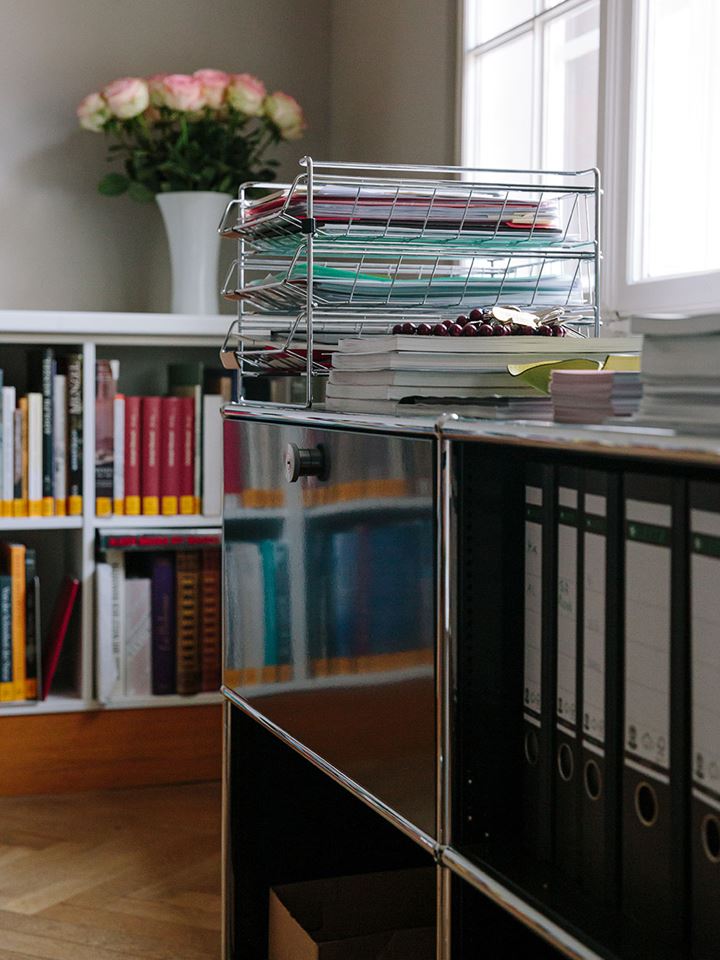Diandra Donecker - Art Historian and Grisebach CEO
Despite Berlin celebrating 30 years since the fall of the wall last year, the city is still diverse in terms of its appearance. Whereas one day you might find yourself walking amidst the Brutalist architecture of Karl Marx Allee which traverses the districts of Mitte and Friedrichshain, another you may end up along the cream-colored streets of Charlottenburg populated with ornate buildings complete with turreted roofs and double door entrances. Villa Grisebach is one such building. Situated on the leafy Fasanenstraße just off Berlin’s Kurfurstendamm, the opulent villa was originally built as a studio and residential property in 1891-1892 by the architect Hans Grisebach. Now, Villa Grisebach is home to a renowned auction house specializing in artwork from the 19th, 20th, and 21st centuries. The organization is headed up by photography expert Diandra Donecker, who impressively became CEO in 2019 aged only 30. She is also the head of the house’s photography department. We caught up with her in Berlin to find out more about the power of female photography, role models in the art world, mixing together old and new aesthetics, and why auction houses should be open to everyone.
Mixing together old and new is something that is a key part of Grisebach’s DNA.
- Diandra Donecker
So, Diandra, how did you first become interested in art?
My mother is an art historian, my father studied photography, and all of my family members of my mother's side are somehow involved in industry either as artists themselves or as dealers. So, when I was a child, I was always surrounded by art and going to museums. When I realised, 'okay, you can actually make a living out of this,' I went straight to Munich to study art history. I was always very determined to turn my passion for the subject into my career.
What were some of your first experiences of working in the art industry?
I started university in 2008 so—due to the economic crisis—while I was studying I always did one or two internships a year. I thought that the more people I got to know, the easier it would be to get a job in the future. The first internship I did was at Bellinger Gallery in Munich, which is now closed. I later went on to do a nine-month placement in the department of prints and hand drawings at the Metropolitan Museum for Art in New York, before taking up my first full-time job at Christie’s in London and Munich. In Munich I worked under the director Marie Christine Gräfin Huyn, who was a fantastic boss. She is very smart and precise and became my role model. In the art world you think there are a lot of powerful females but to be honest when you get higher up the ladder, you find out that most people in leadership positions are men.
What first attracted you to working at Grisebach?
Actually everything! From the first moment that I read about the company and its history I felt like I had to work here. The auction house was established in 1986, before the Berlin Wall came down. The founder had a dream of a united Germany without borders, and wanted Griesbach to embody this and be an auction house for the whole of Germany.
I also think it's very very special how art is treated here. There are almost 55 people working here and almost 40-something are art historians. Many people working here are experts or have written books about certain artists, so the quality of involvement with the arts is extremely high. There is also a lot of passion and love.
What does an average day look like for you?
I enter the villa at around 09.30 am. I start by saying hello to everyone because I think it’s really important that your team feels connected and that personal interactions make you feel more motivated. Then I have normally about two hours a day working on my emails. Then for lunch I usually need to meet up with clients to discuss consignments and acquisitions for the house. In the afternoon it depends. Sometimes people come to visit me, or I have some meetings to discuss the house’s strategic direction or upcoming events that we’re organising, such as lectures, discussions or exhibitions. Most of the time I have to meet someone for dinner or go to an opening reception or go to another lecture to meet other experts in their fields. So, I see myself more or less as always being on the move and I'm not too long in front of the computer.
In the art world you think there are a lot of powerful females but to be honest when you get higher up the ladder, you find out that most people in leadership positions are men.
- Diandra Donecker
It sounds like you need to work very flexibly. Is the flexible nature of the USM modular furniture systems why it is a prominent feature in Grisebach’s office spaces?
Definitely. The flexible nature of USM furniture is extremely important for us at Grisebach because we have to clear out all of our rooms before our art previews and auctions. USM Haller Sideboards —which are lockable and rollable, meaning that we can put them in other rooms where visitors won’t see them—are perfect for these situations. As well as being practical, they also look very elegant in our offices on a day to day basis. So even though you don’t necessarily want to move them out of sight, we can if we need to!
I think USM in general has a very simple, clean, and laid back aesthetic. This means that when we invite clients into our offices, they are never distracted by their surroundings, or thoughts of whether the furniture is beautiful or not! It’s like a monochrome canvas that everything fits around.
How does the modern aesthetic of USM modular furniture work alongside the original features of the house?
I think mixing together old and new is something that is a key part of Grisebach’s DNA. We always mix together different elements in terms of the art we buy and sell whether that’s mixing mediums such as painting and photography, or mixing epochs and styles such as work from the 19th, 20th, and 21st centuries. USM, therefore, is a beautiful and wonderful addendum to the art we present. As I mentioned before, its simplicity is a perfect addition to Grisebach because it’s not too in your face, it’s very discreet, like background music.
You just mentioned photography—your speciality—which is a very modern art form in comparison to disciplines such as painting and sculpture.
Yes, it's a very new field in the market. For some people—due to the technical aspects of the medium—photography has always felt more like a science rather than an art form. We still have some clients or contacts who will ask me to explain what is so special about a photograph over something they might see as more skillful. Today, it’s so easy to access cameras, we all have one on our phones and are used to sharing images on Instagram, so we feel like taking pictures is familiar and normal. But when you look at the prints we sell at Grisebach, they have outstanding compositions, they’re printed on beautiful paper, and the people who took them are extremely knowledgeable about their art form. It’s not just a matter of clicking a button. I hope that the popularity of Instagram and other image-based platforms will actually raise people’s interest in photography and its history.
Who are some of your favorite photographers? Does your personal taste in photography differ from your professional taste?
I love portraits, and my current crush is Germaine Krull. She was a photographer during the ‘20s. Being a woman at that time would have meant you wouldn’t be allowed to have your own flat or have a job without your husband’s agreement. Female photographers, of which Krull was one, were so self-confident that they just took their chance and were brave enough to say ‘I want to have a camera and I want to shoot.
In terms of the work I acquire for Grisebach, it’s a little bit different. For the photography department, it's always very fantastic when we can offer artwork that is special for the time, that is rare, and that is in beautiful condition. I would not say that as a department I have some preferences for artist photographers. This would make our selection very narrow and we also have to take the consignment offers we have into account.
What do you do outside of work?
I love to read a lot, and I love theatre, but my favorite thing to do is to enjoy food with family and friends. I cook or I go out for dinner - I have a very good knowledge of Berlin restaurants! I think one of the nicest places I went to recently was the Lode & Stijn, it's a Scandinavian place in Kreuzberg. Then I love Paris Bar, of course. It’s a very famous bar that has been a hub for the art community since the late ’70s. It's still so full of energy.
I think Berlin is the only city in Germany that can be compared to metropoles like London and Paris. It's so wide and it offers you so many options of being yourself.
You seem pretty settled in Berlin. Can you tell me what your hopes are for the future of the city’s art world and Grisebach in particular?
I want to sell really good art to the best results for all my clients. I want the house to be an open place for everyone who's curious. We're working a lot on opening it up, by introducing online only auctions, and running free exhibitions, events, and parties. I don’t want anyone to question whether they’re allowed to enter or not.
I hope that Berlin will continue to protect and nourish artists. I also hope that, as a city, it will stop thinking in divisions and borders, especially between what venues are defined as galleries, auction houses, or studios. We all belong—and should all work—together.
Berlin is the only city in Germany that can be compared to London or Paris. It's so wide and it offers you so many options of being yourself.
- Diandra Donecker
Thank you Diandra for showing us your beautiful office space in Berlin and for giving us an insight into the German art market.
This portrait was produced by the international interview magazine Freunde von Freunden.













